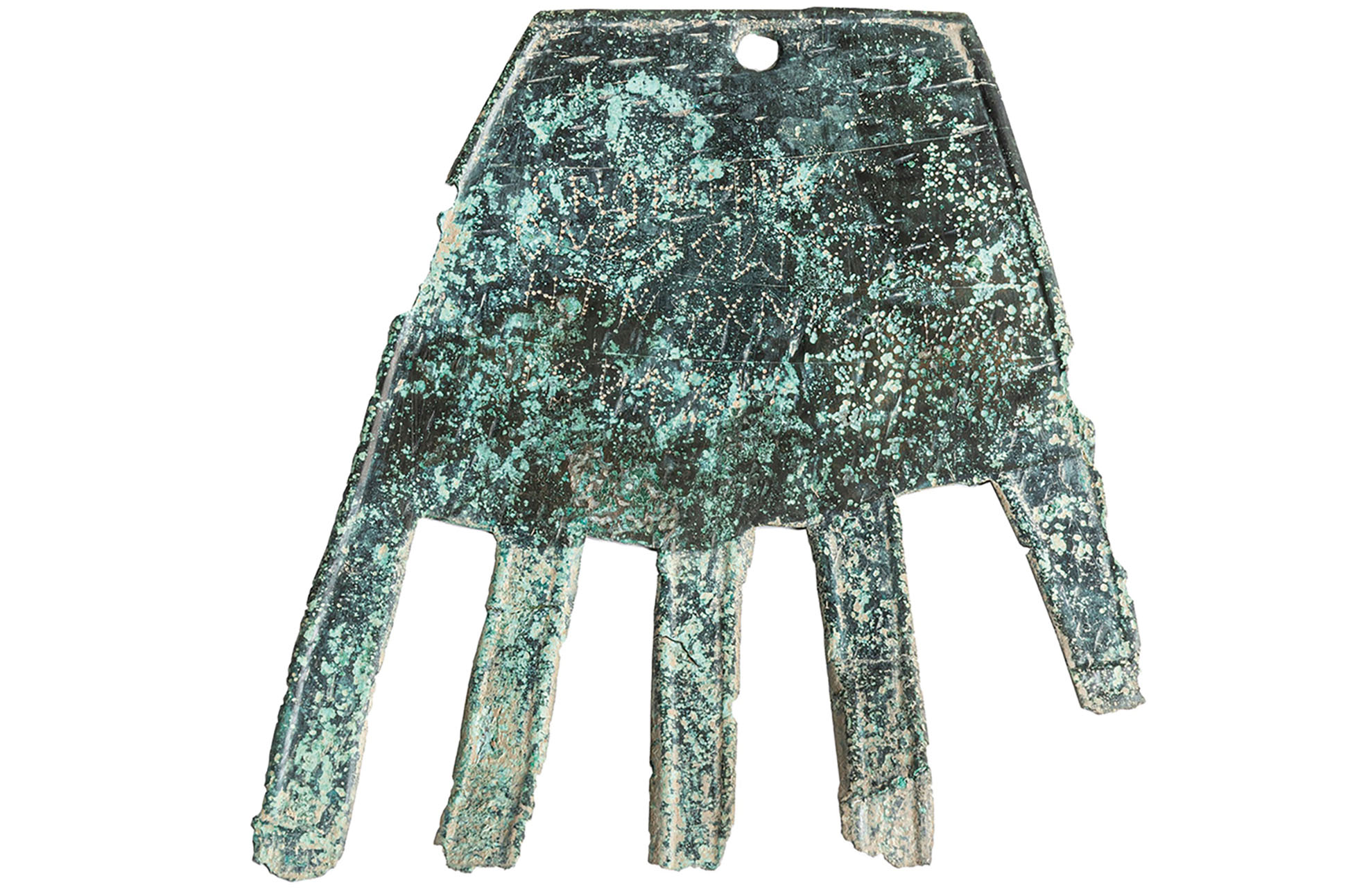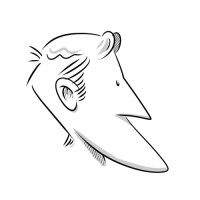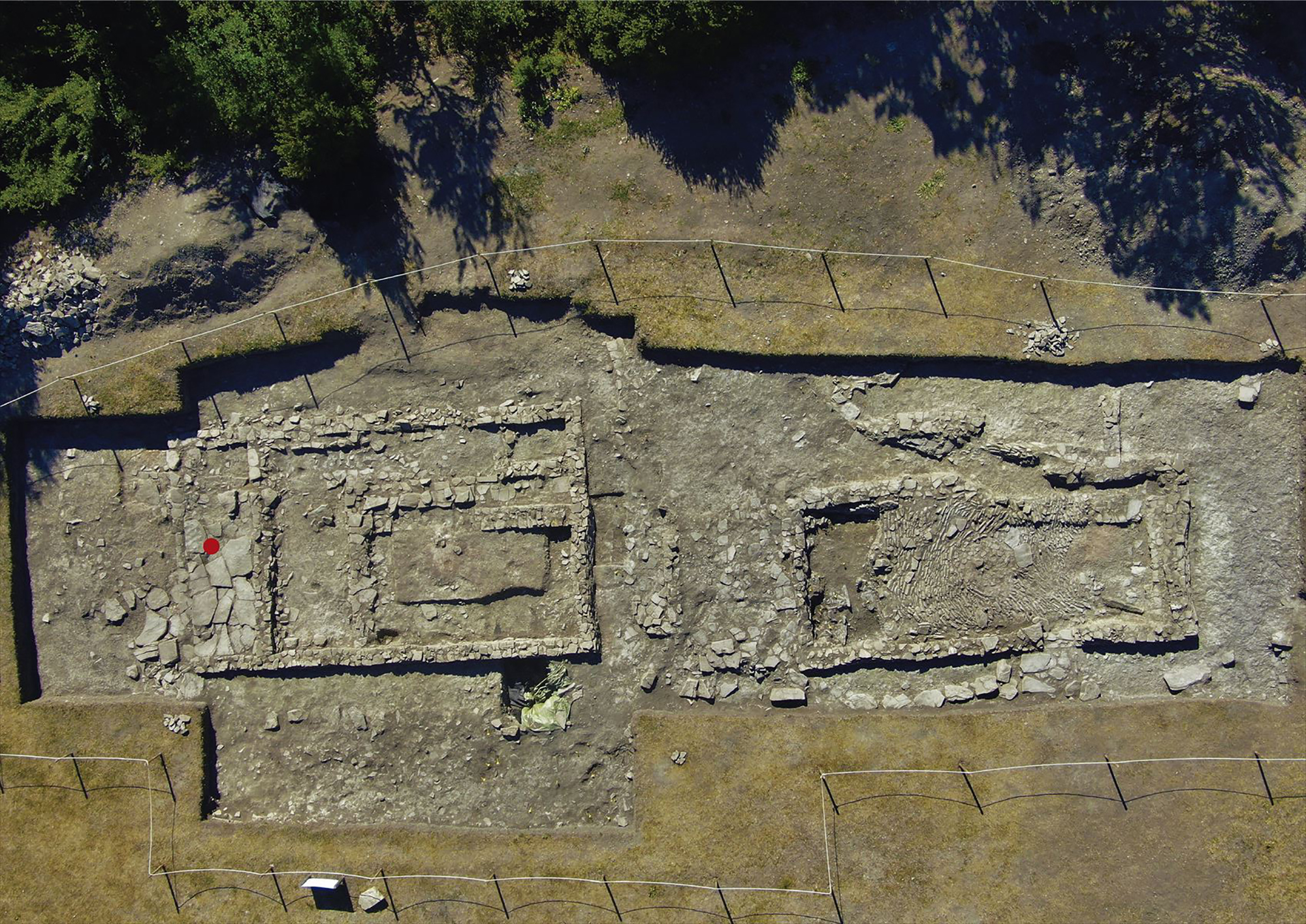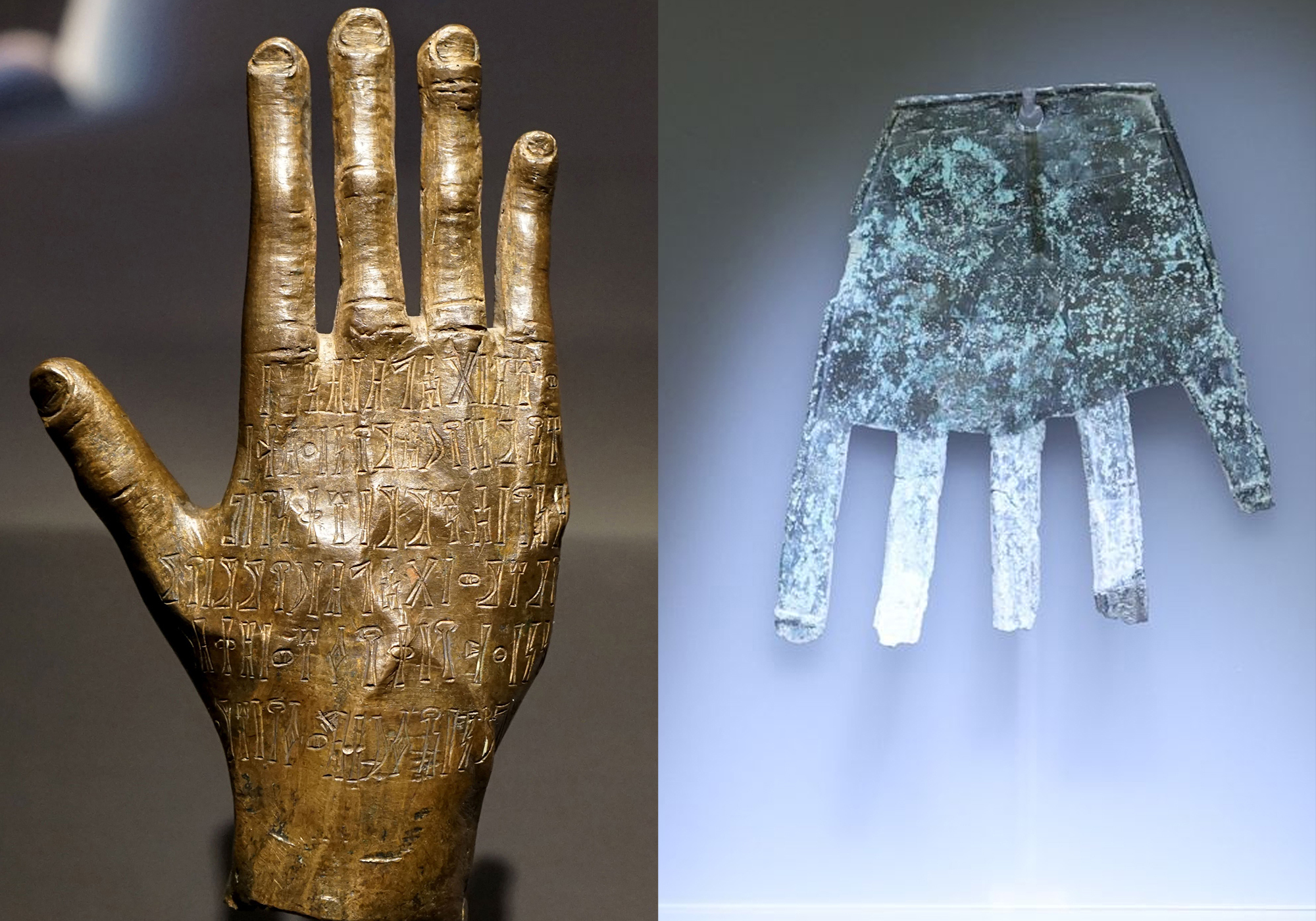"Irulegi's hand is a voice coming from the inner community."
- Since 2017 he is director of the Irulegi Mattin Aiestaran de la Sotilla site (Tolosa, 1991). A member of Aranzadi, Iruritarra for ten years, studied History at the UPV/EHU and now meets his doctoral thesis, directed by Professor Joxean Mujika and the archaeologist of the Government of Navarra, Jesús Sesma. He tells us about the discovery of Basque inscriptions of ancient times and the importance of the site: “We have a privileged image of the time that was missing.”

[This interview can be read free and free thanks to the contribution of thousands of people who support this communication project. If you also want to protect yourself, do ARGIA]
Irulegi's extraordinary discovery is the result of several years of work, are you going to tell us?
Aranzadi entered the site in 2007 at the request of the town hall. In Aranguren, the auzolan is still in force, and when in 2006 citizens started cleaning the top, they found a couple of oversized sillares. They knew that there was a castle in the Middle Ages and when they found the footprints they saw that they needed the help of some professionals. In 2007 a first delimitation was made, and thus the existence of a small town of the Iron Age, located under the hillside of the mountain was known. But the town of Aranguren wanted to focus first on the castle. Ten years later, we took this phase out and started working in the village.
On the lower side, besides the bronze hand, you have found significant remains. What conclusions can be drawn?
At least we have found overlapping the stages of four villages, from the Bronze Age to the 1st century BC.
The elements of their daily lives have been explained: ceramics, bones of the animals they ate, seeds that have been preserved roasts, construction remains, stoves to warm up the food...All of them are not something completely different from their neighboring villages. The influence of the Ebro basin is there, also that of Aquitaine, so we can conclude that it was quite similar to that of the other localities.
But they soon left the village.
Irulegi offers us a last frozen image. That was a great tragedy for them, because they destroyed at least half of the village, but for us it is a bargain, because we find ourselves with misfits: cooking, living, stabbing things... Everything is as they left in the first quarter of this last century. This is very important: in the deposits of the Roman era there are many excavations that reach the height of the Basques of the first century, but the image is less clear, because on top they have a city. That is what happens in Pamplona, or in Andelos. But in Irulegi it's this last level, and we have a privileged image of the time that was missing.
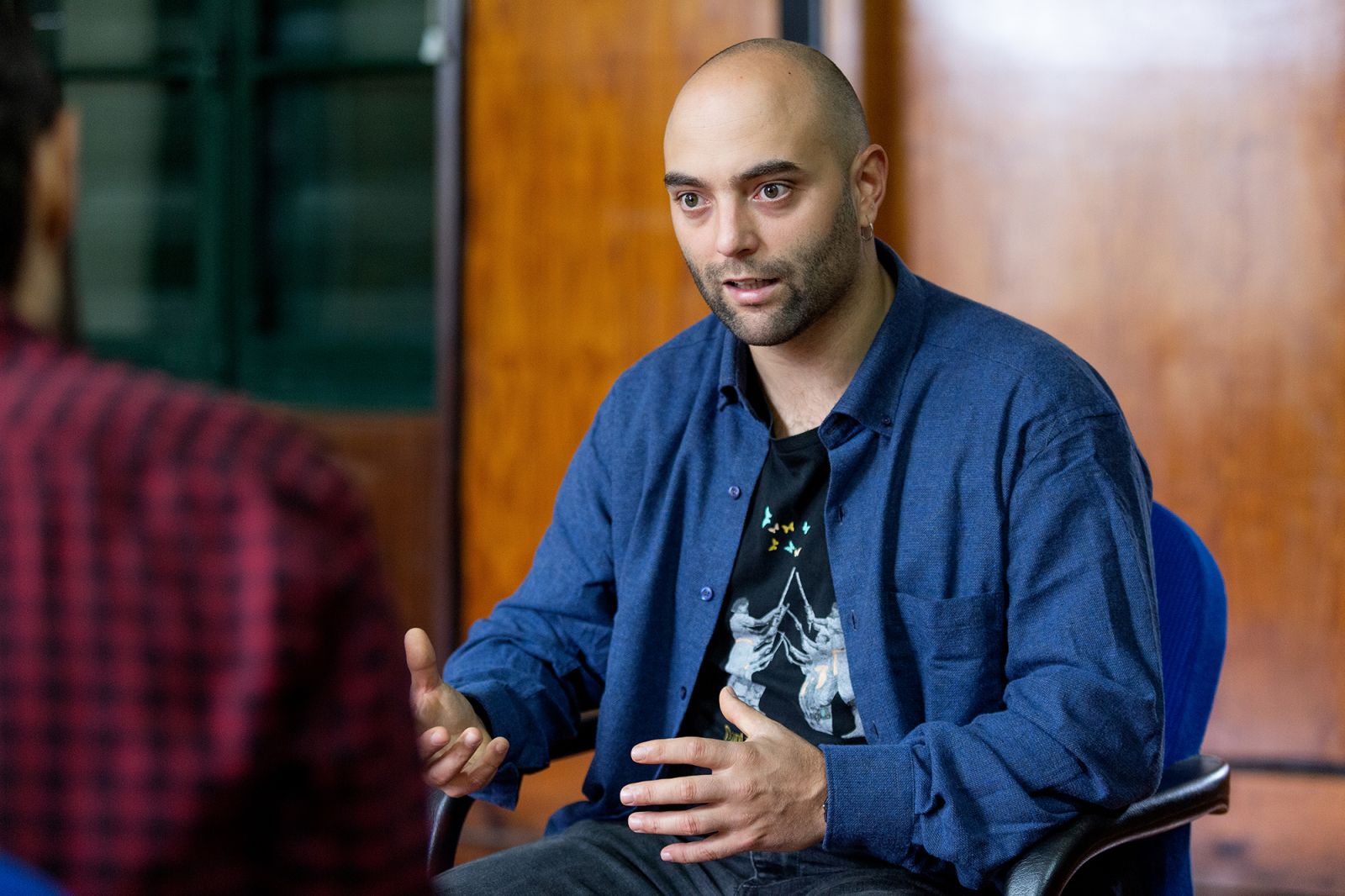
And what does that image tell us? Why did they abandon it?
They were the elite of those times, warriors, united to the cavalry. This is very well documented in the villages of the area, both Celtiberos and Iberian ones, and in Irulegi. We don't know what happened to them. What we do know is that from 82 to 72 BC they suffered a violent episode of the Roman war on the Iberian Peninsula, without the possibility of neutrality. We do not dare to say whether they slipped with Sertorio or Pompeii.
If the end of the village were not so, would that testimony in Basque not be there?
Surely there would be nothing of great value that we have found. They weren't as wasteful as we are today, they didn't leave things there. That is precisely the question we ask ourselves: Is it a special irulegi because there were only those pieces in it? Or have their frozen images not appeared in other villages?
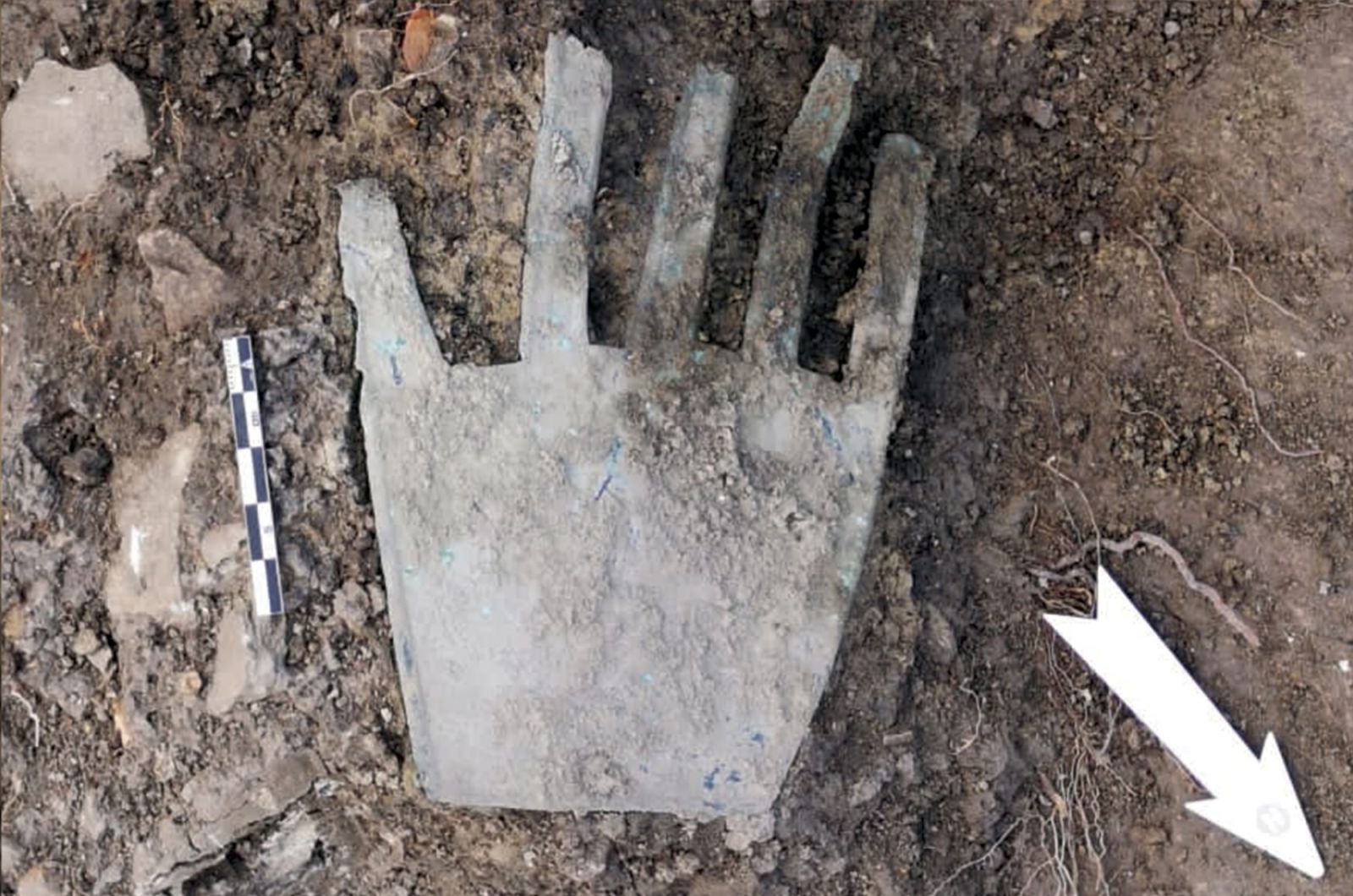

The discovery of the bronze hand that took place at the end of June 2021, were you there, from the beginning they realized it was special?
Yeah, because we saw a kind of bronze sheet coming out. We saw him a rim. As the sediment is gently removed, parts that may be special are detected, even when they are still underground. This is what happens to us with bronze: the light green color contrasts greatly with the earth. So a person with a sun and a camera was next to us, and that's what we do with most of the pieces that come out to us. At that time we were afraid, we said: “This is not complete, part is missing.” It looked cut, it had a hole, but we didn't know exactly what it was for. Maybe the decoration of a helmet? Something to get out of the house? We didn't understand. Of course it was covered in dirt, because we never cleaned the pieces right there, we handed them to the restorer to wash them in the lab under much more favorable conditions.
Is that the protocol?
The entire excavation is recorded. When we take it out, with its ground beneath it, we put it in a hermetic bag. These bags are given a few little holes to slowly lose moisture, and we always leave it in the shade. When the restorers of the Government of Navarra arrived, we opened and taught the bag with gloves. We are 10 minutes from the Cordovilla archaeological warehouse, which allows us to maintain that daily relationship to receive your feedback and deliver the pieces quickly. At the time, however, we were not too shocked. Emotion came later, months later the technical archaeologist called us.
What did you say?
There was something written on that piece and as soon as possible to go to Cordovilla. There I went and saw that the restorer Carmen Usua, who we later learned is a hand when we saw her nails, cleaned the center of her hand, just the one that is written. He did a very superficial cleaning, emptied some points to see if they had the same potato as the piece all over its surface, and when he saw that yes, he stayed there. He did a great job, the second discovery is his.
"Irulegi offers us a last frozen image. That was a great tragedy for them, but for us it's a bargain, because we're faced with misfits."
But they didn't understand what it was!
We don't know about those issues, we're archaeologists, we can zoom in, but we don't do it. There are people who have spent their whole lives studying these kinds of writings and we had to go to those people. Javier Velaza, professor of the University of Barcelona, has analyzed all the headings of Navarra and the technicians advised us to refer us to him.
He deciphered the text with you, literally.
I remember that we went one morning, I was pretty nervous, I didn't know Velaza, but I found him a very close person and a professional cult. He said that at the time of reading it was important that some untrained eyes see these lines because they have a vivid look to see the letters. When we took our hand we started reading the other way around, and she picked it up and said, “This is the other side.”
With Joaquin Gorrotxategi, the same process is repeated, since besides the epigraphic, the linguistic also had to be worked out. It's what they call an autopsy. What surprised me was that by making sure I was a Gorrotxategi Vascon, I wasn't particularly surprised, they looked at each other and said, “But we already knew this, right?” We knew it, but the evidence was missing.
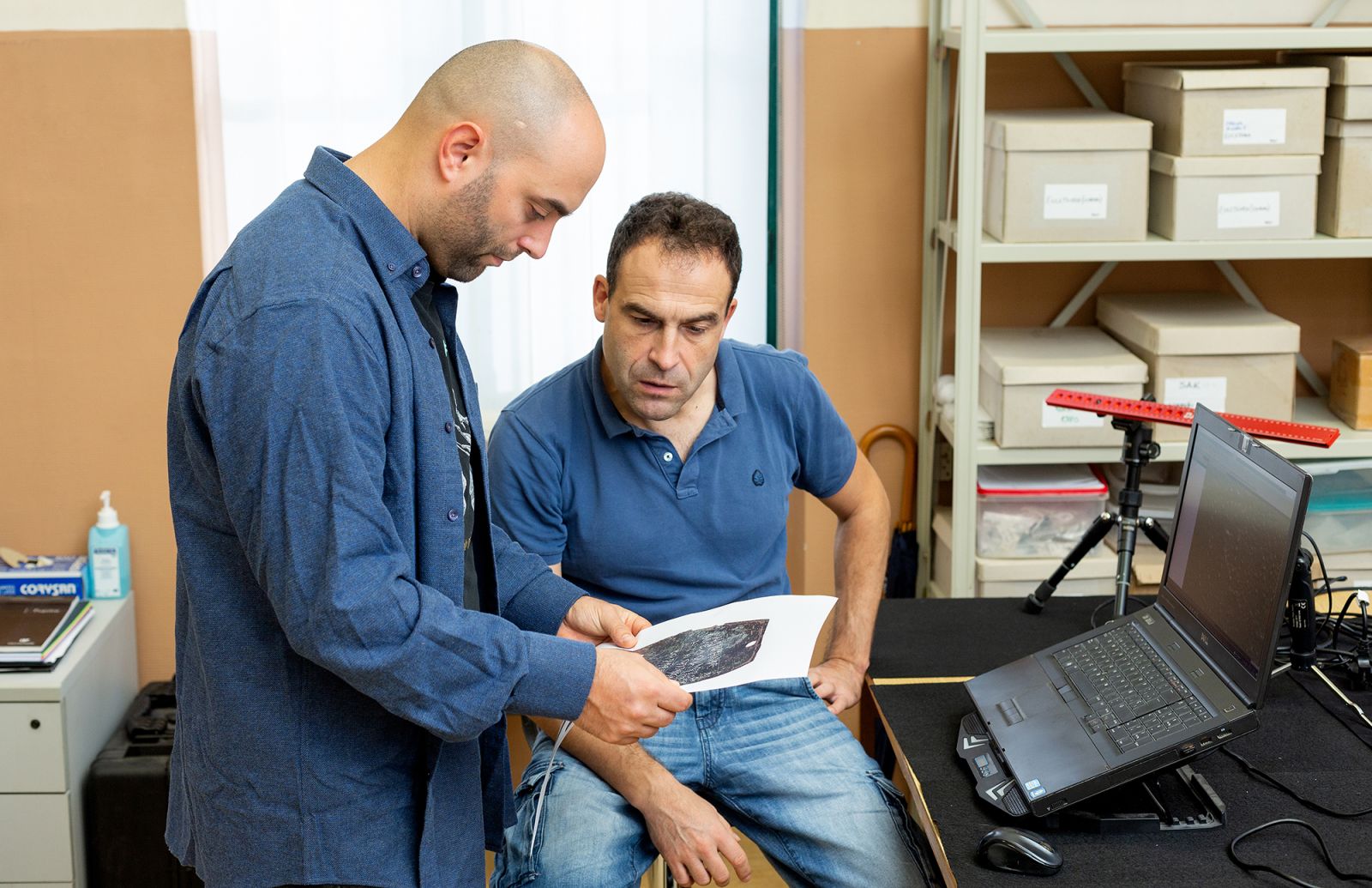
The text is in “vascón” and written in a variant of the Iberian scripture. Can we say that the Basques of two thousand years ago wrote and wrote with their own alphabet?
The conclusion drawn by Javier Velaza is that they had their own writing, somewhat adapted from the Iberian; at the moment we know that at least one letter had been adapted, and for them it is enough to say that it is another graphic system. They did it because they had to say a sound that the Iberian doesn't have. We asked the philologists. “Is this a previous Basque? Or what is it?” According to Gorrotxategi, if the Basque of Antiquity found in Aquitaine is called “aquitaine”, being in the heart of the Basque territory Irulegi, we can call it “vascón”.
But do we talk about the Old Basque?
We are talking about the oldest secure document in the history of the Basque Country. I say it is certain because there are other dubious writings, as in the case of the mosaic of Andelos. But in Irulegi there is no doubt. In addition, it's a text, it's not a single word, or a toponym, or a person's name, like the ones in the coins.
It is a decorative element or amulet to be placed in an atrium. How do you know?
"The moment we pulled out the piece made us suspicious, we said: 'This is not complete, it's missing part'
We have had to learn the word: it's apotropic. An element to attract happiness and drive away misfortune. We know this from the first word: sorioneku, which gives it a great interpretive weight. But there are also parallels like Zafar's hand in Yemen. On the other hand, taking into account where the house has appeared, it should be something private, of the owners of the house, and what tells us about their beliefs. All the testimonies we have of the Basques are of external origin, of Roman sources, with an imperialist vision and an interest. So we need those pieces: direct testimonials, a voice coming from the inside of the community, talking about those things. With their beliefs and in their language. It's amazing.
Have you done carbon tests? Do the conclusions of the headings and philologists coincide with the chronology shown by archaeology?
The dating and the context given by the material culture coincide: They are in the first quarter of the 1st century BC. C. Carbon 14 also confirms our hypothesis. But we know this better from ceramics, because there's a lot of typological precision. There is no element to think that there is another type of intrusion or that the lands are in a secondary deposition moving from the original area... The house fell and was sealed, covered, untouched for 2,100 years.
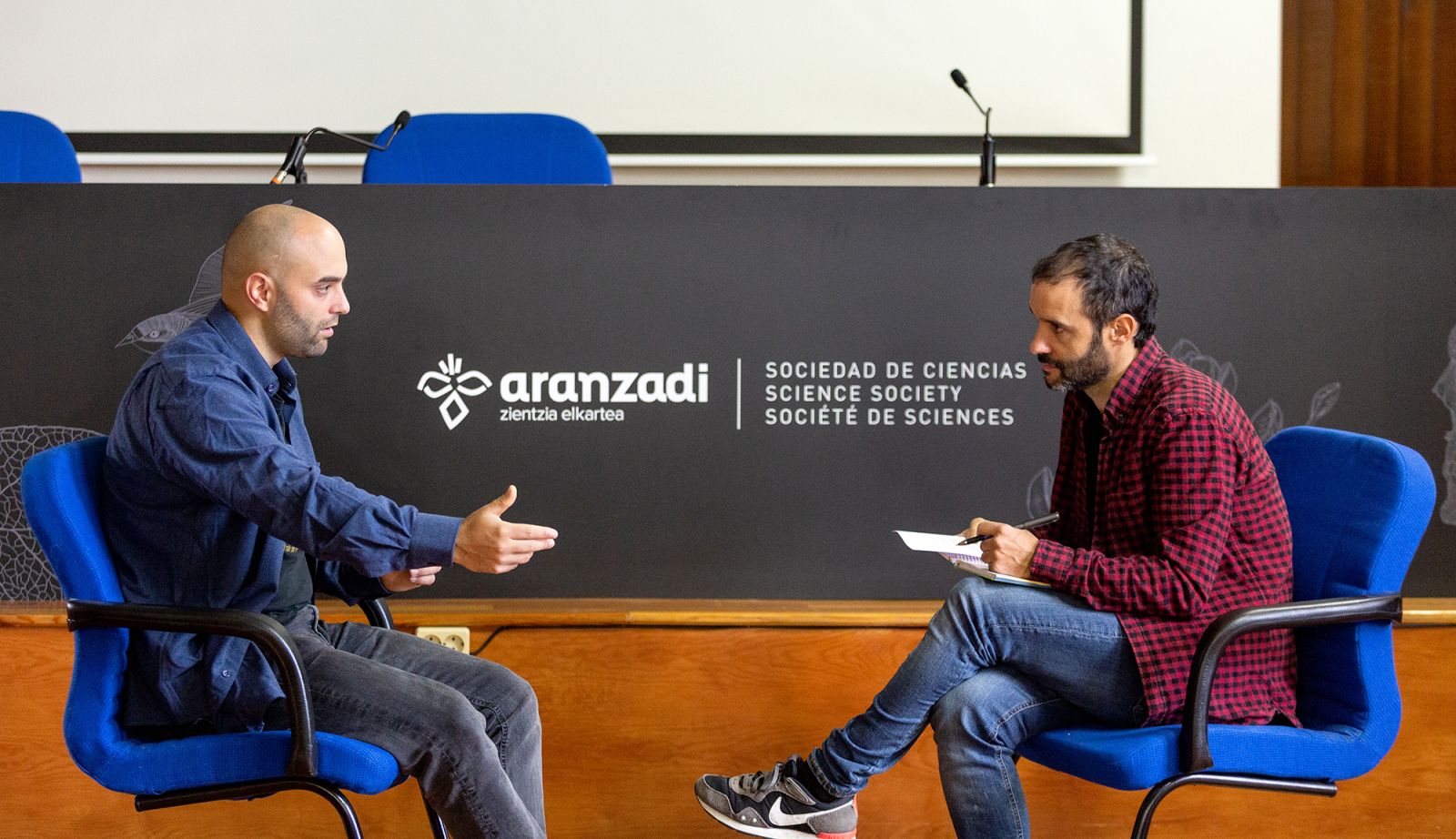
You intend to publish the results of the discovery in a scientific journal. Why have you presented the piece publicly before?
We'd like to publish in the prestigious journal Antiquity from Cambridge University. The article has been sent and the first filter of the editor has passed. The research group wanted to make public afterwards, but the political agenda is also there, and keeping the discretion we have had for a long time with this piece is not easy. We have therefore presented it with the guarantee given by the editor's yes.
Do you have the hope that more material of this kind will emerge at the site?
We've only excavated two houses and a part of the main street, and there's a whole village there, so there's so many possibilities to work. For the time being, we have agreed on an action plan until 2024, and we will surely have to agree on another one to set targets within such a short time frame.
With regard to funding, where have you received support from?
The excavation, restoration, museum of the castle has been financed 100% by the City Hall of the Aranguren Valley. In the Iron Age village it follows the same line, but the Government of Navarra also offers aid since 2018, which are also welcome. The City Hall of Aranguren, however, remains the most important of the budget.
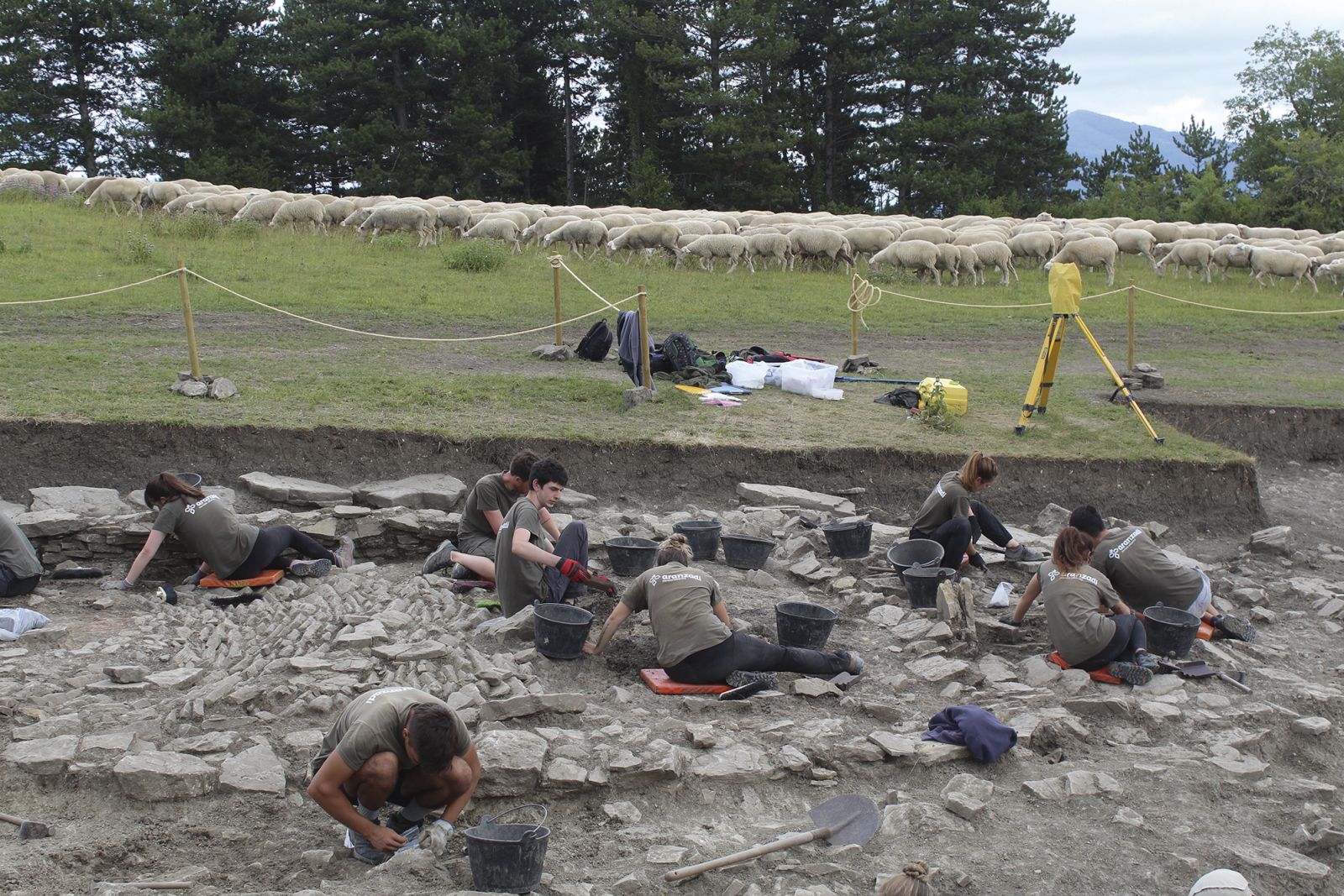
It attaches great importance to this support and to the relationship with the City of Aranguren, right?
Yes. It seems to us that archeology is not something that should remain only in academia, that the issue has to be more democratic, that we are talking mainly to the people and to the people. Perhaps this Aranzadi can be distinguished from other institutions by its proximity to the people. That does not mean that we do not have to maintain scientific rigour, we are in it. Our first opinion on this issue is that of the Aranguren Valley, which is the heritage of all the Navarros and of all the Basques, who are the caretakers, because they have been betting for years on it.
Horned by archaeologists
"They are normally needed to correct a deposit of this type from the age of 45. Go, defend your doctoral thesis, a postdoctoral one there, another here... suddenly you get a university place and with many fortunes a field. In our case, we had deposits, Aranzadi had very important, they've given great discoveries, but they needed young research people to be willing to correct the academic career at that point in their lives.
And there we've had a blast. Oihane Mendizabal, who is writing his thesis at Zaldua along with Orreaga; Dani Ruiz, who is in Koxkobilo de Olazti; Josu Narbarte, who is now in Andosilla investigating a great Altomedieval site; Suberri Matelo and Maite Errarte, who collaborated in the ethnographic field. We have a network of mutual assistance, and I thank you very much."
On August 1, a dozen people from the family were in Aranguren. Two young people from Aranzadi made firsthand the excavations and works being carried out in Irulegi. This visit is highly recommended, as it reflects the dimension of the work they are doing.
Halfway, at the first... [+]
You might see it in mountains or rural areas, looking for underground footprints with metal detectors. They're detectors or pitchers, they bond to play for treasure. Detectorism has become fashionable and there are youtubers and television series talking about them. This activity... [+]
I believe that in recent years two well-differentiated stories are being constructed about our history, our culture, our language, etc. On the one hand, what we could call "official line" and on the other, a line based on recent research and archaeological findings.
The discovery... [+]
The hand of Irulegi, over 2,000 years old, is being an unprecedented incentive in the national conscience of the Basque Country. Its impact, so that the Basques feel so strong and emotionally challenged, invites us to think about what really lies behind this discovery.
This is... [+]








